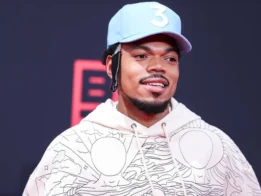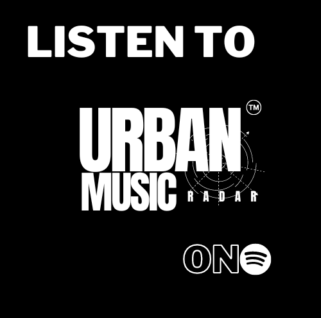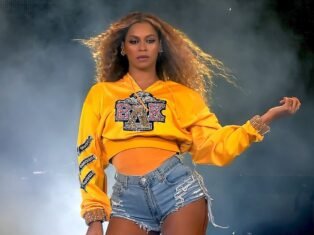
7 Steps To Understanding The Rise Of Trap Music In Urban Culture
Most urban music enthusiasts have witnessed the meteoric rise of trap music in recent years, but few truly understand its cultural significance. In this enlightening article, we will unravel the complex web of influences and trends that have propelled trap music to the forefront of urban culture. By breaking down its origins, defining characteristics, and impact on society, we will provide a comprehensive guide to comprehending the phenomenon that is trap music.
The Roots of Trap Music
Southern Hip-Hop Origins
A crucial starting point in understanding the rise of trap music is recognizing its roots in Southern hip-hop. Originating in the southern United States, trap music first emerged in the early 1990s within the southern hip-hop scene. Influenced by the gritty realities of inner-city life, trap music's lyrics often revolve around themes of street culture, drug trade, and the struggles of poverty.
Influence of OutKast and UGK
To explore deeper into the roots of trap music, we must acknowledge the significant influence of iconic Southern hip-hop groups like OutKast and UGK. OutKast, hailing from Atlanta, Georgia, and UGK (Underground Kingz) from Port Arthur, Texas, played key roles in shaping the sound and style of trap music. Their unique blend of Southern musical styles, powerful storytelling, and innovative production techniques set the stage for the evolution of trap music.
Plus, OutKast's groundbreaking album "ATLiens," released in 1996, and UGK's classic tracks like "Pocket Full of Stones" laid the foundation for what would later become known as trap music. Their contributions to the genre inspired a new wave of artists to embrace the raw authenticity and distinctive sound of trap music, ultimately paving the way for its widespread popularity in urban culture.
The Rise of Trap Beefs
Assuming you are familiar with Trap music, you'll know that beefs and rivalries have been an integral part of the genre's evolution. These tensions between artists often spill over from the music into real-life conflicts, creating a fascinating dynamic within urban culture.
T.I. vs. Lil' Flip
With the rise of Trap music in the early 2000s, one of the most notable beefs was between T.I. and Lil' Flip. The feud escalated with diss tracks and public confrontations, captivating fans and the media alike. This rivalry not only highlighted the competitive nature of the industry but also showcased how personal disagreements could shape the direction of an artist's career.
Gucci Mane vs. Jeezy
The rivalry between Gucci Mane and Jeezy is one of the most legendary in Trap music history. The tensions between these two Atlanta-based artists culminated in violent incidents, proving that Trap beefs were not just about music but also about real power struggles and street credibility. This feud not only divided fans but also had a significant impact on the Trap music scene as a whole.
A deeper look into the Gucci Mane vs. Jeezy beef reveals a complex web of personal history, misunderstandings, and conflicting egos. The feud became deeply ingrained in the fabric of Trap culture, with both artists using their music as a battlefield to settle scores and assert dominance.
The Role of Mixtapes in Fueling Rivalries
Rivalries in the Trap music scene often found fuel in the release of mixtapes. These underground projects allowed artists to express their raw emotions and take direct shots at their rivals without the constraints of mainstream industry pressure. Mixtapes became the battleground where beefs could escalate and where artists could gain respect and recognition within the community.
It's fascinating to see how mixtapes, once seen as mere promotional tools, became instrumental in shaping the narratives of Trap beefs. The accessibility and authenticity of these projects made them a powerful medium for artists to tell their side of the story and rally support from their fans.
The Evolution of Trap Sound
From Crunk to Trap
All great musical movements have their roots, and the evolution of trap music is no different. The genre has its origins in the early 2000s in the southern United States, particularly in Atlanta, Georgia. Trap music emerged as a subgenre of the already popular crunk style, characterized by its dark and aggressive lyrics and beats. As trap music began to gain momentum, it started to distinguish itself from crunk by incorporating elements of electronic music and creating a more ominous and atmospheric sound.
The Impact of 808 Drums and Heavy Bass
From its early days, one of the defining features of trap music has been its heavy use of 808 drums and bass. The iconic Roland TR-808 drum machine, with its deep, resonant bass drum sound, became synonymous with trap music. The combination of these elements created a unique sonic landscape that set trap music apart from other hip-hop genres.
The use of heavy bass and 808 drums in trap music not only set the genre apart sonically but also played a crucial role in shaping its emotional impact. The pounding bass and sharp drum hits in trap tracks create a sense of urgency and tension that resonates with listeners on a visceral level.
Experimentation with Melodic Flows
As trap music continued to evolve, artists began experimenting with different melodic flows to complement the genre's signature sound. This experimentation led to the incorporation of catchy hooks, melodic verses, and intricate vocal rhythms. Artists like Future, Young Thug, and Travis Scott became known for their unique vocal styles and melodic sensibilities, pushing the boundaries of what trap music could sound like.
This expansion of melodic elements in trap music allowed artists to create more dynamic and versatile tracks that appealed to a broader audience. The fusion of melodic flows with trap's traditional dark and aggressive sound created a new wave of trap music that continues to dominate the urban music scene today.
Trap's Impact on Urban Culture
For any cultural movement to fully immerse itself in society, it must have a visual and physical presence that influences the way people dress and move. Trap music has done just that, leaving an indelible mark on urban culture through various avenues.
Streetwear and Fashion
Any observer of urban culture would notice the significant impact trap music has had on streetwear and fashion. Artists within the trap genre often pioneer new trends, blending high fashion with urban street style to create a unique look that resonates with their audience. This fusion has not only influenced the way people dress but has also blurred the lines between luxury and street fashion.
Dance and Choreography
Choreography in trap music videos has become iconic, with dance routines setting trends and becoming viral sensations. The energetic and often gritty movements in these videos have inspired a new wave of dance enthusiasts to create their own choreography, further spreading the influence of trap music in urban culture.
Culture enthusiasts are fascinated by the way trap music has seamlessly integrated dance and choreography into its visual storytelling. This unique blend of movement and music has transcended traditional boundaries, creating a dynamic and engaging experience for fans.
Visual Storytelling through Music Videos
Videos are an vital component of trap music, providing a visual narrative that complements the intense beats and powerful lyrics. The visuals in trap music videos often depict urban landscapes, street life, and gritty realities, offering an authentic portrayal of the culture from which the music originates.
Understanding the significance of visual storytelling through music videos in trap culture is crucial to fully grasp the immersive experience that trap music offers. These videos serve as a window into the world of trap artists, allowing fans to connect on a deeper level and better appreciate the artistry behind their favorite songs.
The Mainstream Breakthrough
Unlike many subgenres of hip-hop that struggled to break into the mainstream, trap music started gaining significant popularity in the early 2000s. To understand how trap music made its mark on urban culture, it is important to explore its journey from underground mixtapes to topping the charts on mainstream platforms. For a comprehensive guide on trap music, check out What is Trap Music: Meaning, History, Types, Steps & More.
Lil Wayne's Commercial Success
The breakout success of trap music in the mainstream can be attributed to influential artists like Lil Wayne. His album "Tha Carter III" not only showcased his lyrical prowess but also introduced trap beats and production elements to a wider audience. The album's commercial success legitimized trap music in the eyes of the music industry and paved the way for other artists to explore the genre's potential.
Kanye West's Experimentation with Trap
Experimentation has always been a hallmark of Kanye West's career, and his foray into trap music was no exception. Kanye's album "Yeezus" challenged traditional notions of hip-hop by incorporating experimental trap sounds and aggressive beats. His willingness to push boundaries and blend genres helped propel trap music further into the mainstream spotlight.
Kanye West's collaboration with trap producers and artists brought a new level of creativity to the genre. By infusing trap elements into his music, Kanye not only expanded his own artistic horizons but also introduced trap music to a broader audience that may not have been exposed to it before.
The Rise of Migos and the "Trap Renaissance"
Waynes before him laid the groundwork for trap music's mainstream breakthrough, but it was artists like Migos who truly ushered in the "Trap Renaissance." This Atlanta-based trio's unique blend of catchy hooks, triplet flows, and trap beats caught the ears of listeners worldwide. Their chart-topping hits brought trap music to the forefront of popular culture and solidified its position as a dominant force in the music industry.
Mainstream acceptance of trap music continued to grow as artists like Migos collaborated with mainstream pop stars and ventured into other genres. The "Trap Renaissance" not only reshaped the hip-hop landscape but also influenced a new generation of artists to embrace trap music's signature sound and style.
Trap's Social Commentary
Your journey into understanding the rise of trap music in urban culture cannot be complete without delving into its social commentary. Trap music serves as a powerful medium through which artists highlight the realities of life in marginalized communities, shedding light on issues such as poverty, violence, and street life.
Poverty, Violence, and Street Life
An integral part of trap music's social commentary is its unapologetic portrayal of the harsh realities faced by many individuals living in impoverished neighborhoods. Through raw and gritty lyrics, artists bring attention to the struggles of making ends meet, the lure of street life, and the prevalence of violence in these environments.
Police Brutality and Systemic Racism
Violence, particularly police brutality and systemic racism, is a recurrent theme in trap music. Artists often use their platform to speak out against injustices faced by communities of color, highlighting the oppressive nature of law enforcement and the deep-rooted racism ingrained in societal structures.
Police brutality and systemic racism continue to be pressing issues in society, and trap music provides a space for artists to express their frustrations and demand accountability. By addressing these topics in their music, trap artists contribute to ongoing conversations surrounding social justice and equality.
The Voice of the Marginalized
Another significant aspect of trap music's social commentary is its role as the voice of the marginalized. Through their lyrics, artists amplify the experiences and perspectives of those often overlooked or silenced by mainstream society. They provide a platform for individuals from marginalized communities to share their stories and be heard.
It is through this representation and amplification of marginalized voices that trap music becomes a powerful tool for social change. By shedding light on the struggles and triumphs of marginalized individuals, artists challenge existing power structures and advocate for greater inclusivity and equality in society.
Final Words
The rise of trap music in urban culture can be understood through a series of steps that have shaped its evolution and popularity. From its origins in the southern United States to its global impact on music and fashion, trap music has taken the world by storm. By following the seven steps outlined in this article, readers can gain a deeper understanding of the cultural significance and influence of trap music.
The Extremely Short History of Trap Music provides a comprehensive look at the genre's roots and how it has grown into a dominant force in urban culture. By delving into the history, production techniques, and key players in the trap music scene, enthusiasts can further appreciate the artistry and impact of this groundbreaking genre. As trap music continues to evolve and shape the music landscape, understanding its rise is crucial for anyone looking to appreciate its cultural significance.
© Africa Music Vibe












